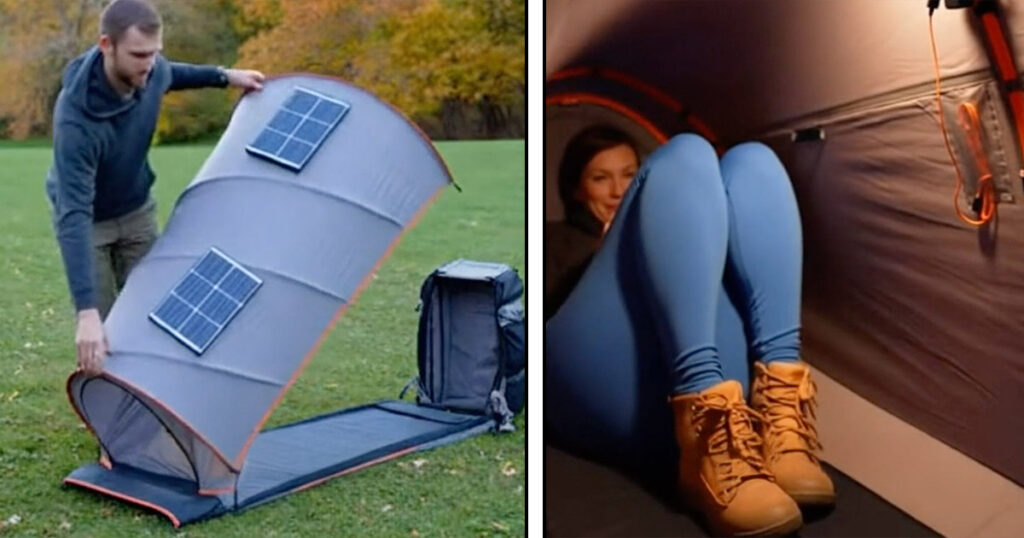There are moments on the trail when the sky turns pink, the breeze chills just enough to remind you of bedtime, and your legs vote for sleep. That is when the backpack bed shines. This inventive pack carries like a rugged 60 to 70 liter rucksack, then opens into a weather-ready sleeping pod in under 30 seconds. No poles to wrangle, no puzzle of clips, just unzip, slide, and relax.
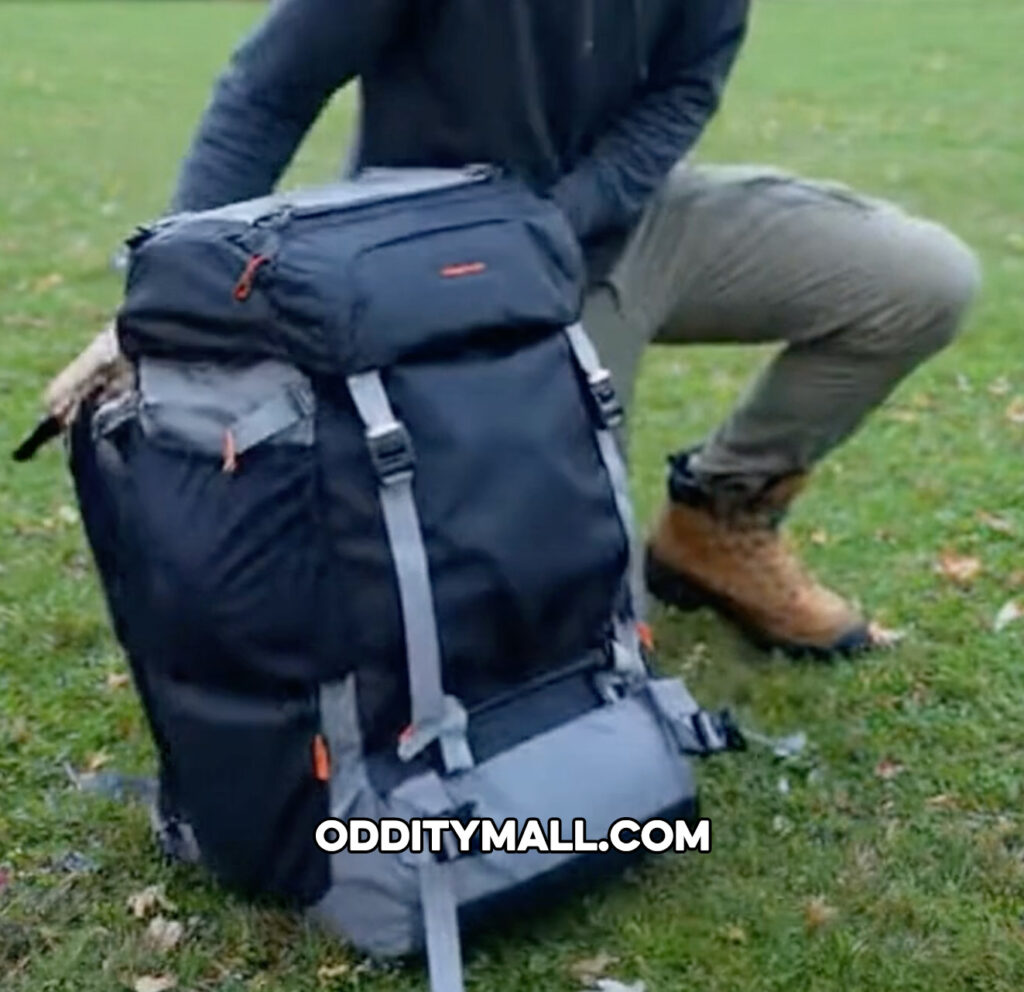
If you are shopping for a backpack bed or you are curious about this all-in-one shelter, this guide walks you through how it works, what to look for, and why hikers, festival goers, and preparedness pros are adding one to their kit.
What Is a Backpack Bed
A backpack bed is a high capacity hiking pack with a built in bed that deploys into a compact tunnel tent. Inside the pod you get a padded ground mat, insulated walls, interior LED lighting, and smart storage pockets. Premium versions integrate solar panels on the canopy to charge lights and USB ports while you hike. Think of it as a self contained micro cabin you wear comfortably on your back.
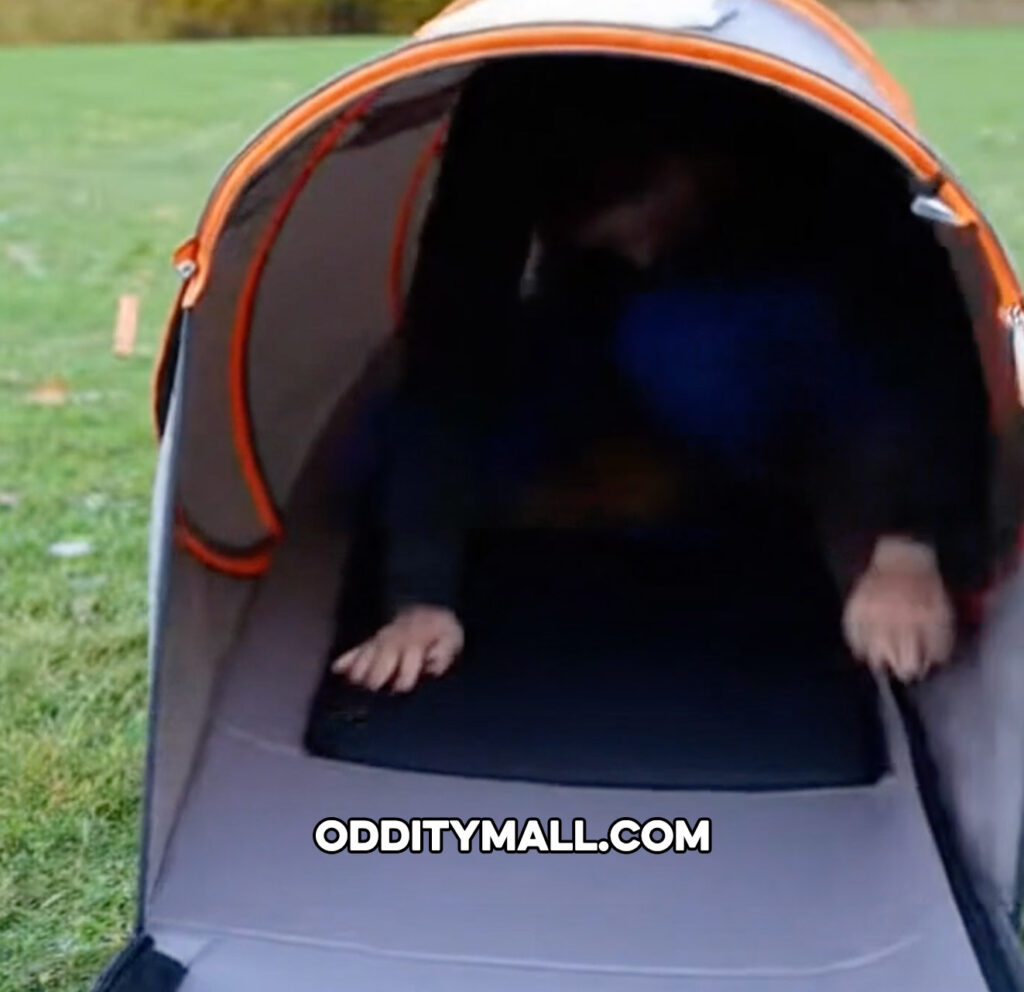
Quick Highlights
- Converts from backpack to sleeping pod in under 30 seconds
- Integrated solar panels power interior lights and USB ports
- Weather resistant shell and water resistant zippers
- Ventilated tunnel design with mesh to block bugs
- Fits users up to about 6 ft 4 in
- Packs down to the size of a standard 70L backpack
How the Backpack Bed Pops Open
The magic comes from a spring loaded ribbed frame. When you unzip the pack and release the panel, the arch sections snap into shape and the canopy unfurls. The base becomes your insulated sleeping platform, so you are off the cold ground without needing a separate pad. To pack it up, roll the frame back into the base, clip, zip, and you are ready to hike.
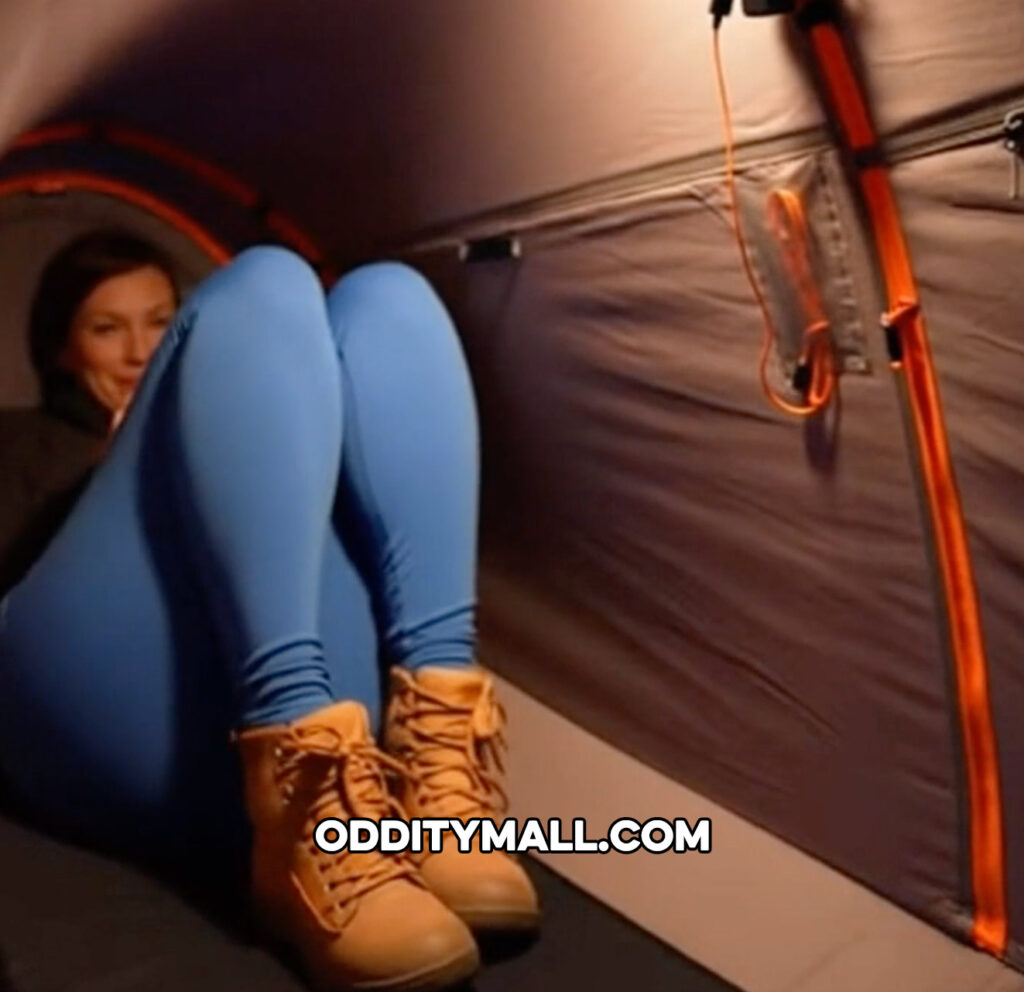
Materials matter here. Look for ripstop nylon and polyurethane coated polyester for waterproofing and UV resistance. Inside, an insulated liner helps stabilize temperature, and the orange stitched channels often hide soft LED strips that provide a warm glow.
Key Features To Look For
Weather Protection
- Durable fly fabric with taped seams
- Floor with a high hydrostatic rating to block wet ground
- Water resistant zippers and storm flaps
- Rigid arch shape that handles wind without sagging

Comfort Details
- Padded base or integrated thermal mat
- Interior height around 30 to 32 inches so you can sit up
- Length around 7 feet with enough width for side sleepers
- Mesh windows and two door configuration for airflow
Pack Carry
- Padded shoulder straps and ventilated back panel
- Supportive hip belt and chest strap for weight balance
- External pockets and compression straps for extra gear
- Total capacity in the 60 to 70 liter range
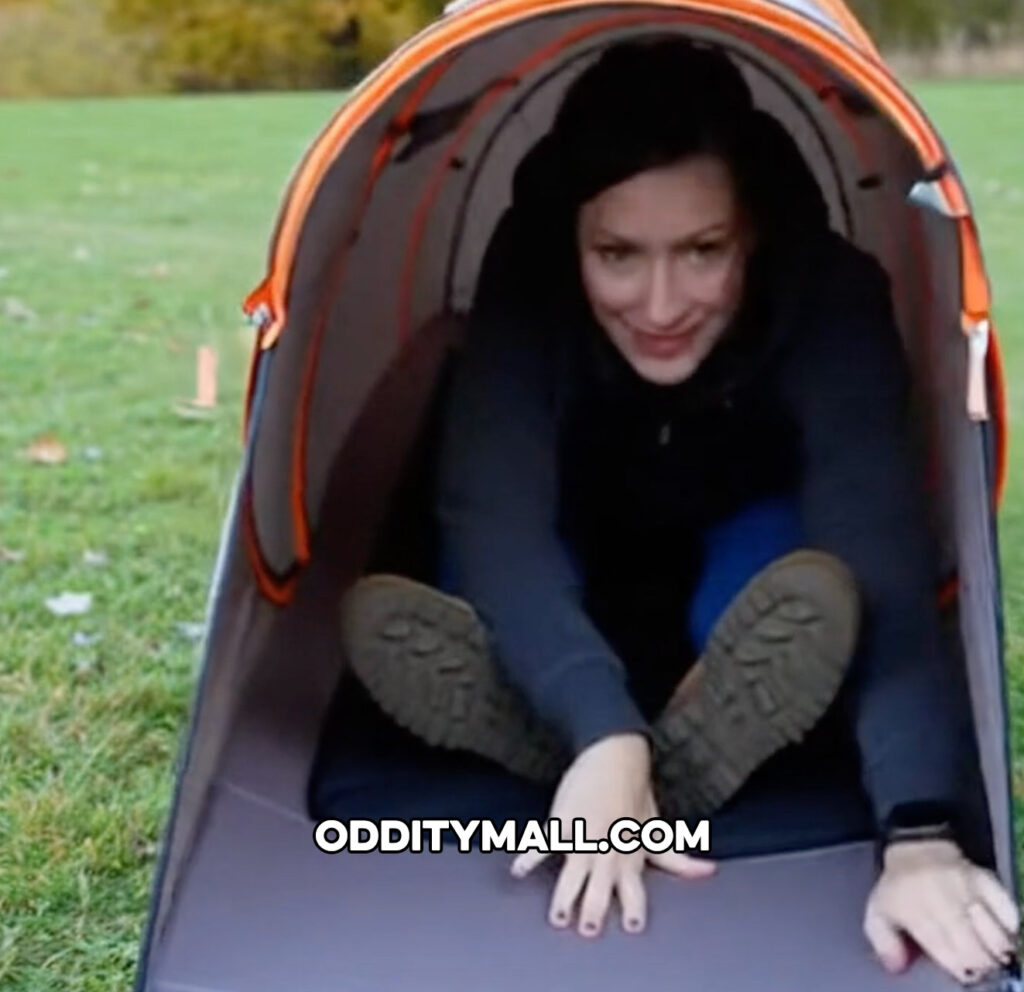
Power and Lighting
- Two compact solar panels mounted on the canopy
- Interior control hub with battery indicator
- Dual USB ports for phone or GPS charging
- Dimmable LED lighting built into the seam channels
Backpack Bed vs One Person Tent vs Bivy: Which Should You Choose
| Feature | Backpack Bed | 1-Person Tent | Bivy Sack |
|---|---|---|---|
| Setup time | About 30 seconds | 5 to 10 minutes | 1 to 2 minutes |
| Packed form | Full size backpack | Separate pack plus tent bag | Small stuff sack |
| Comfort | Padded base and lighting inside | Roomier interior but needs pad | Minimal space |
| Power options | Often solar with USB | Usually none | None |
| Best for | Quick shelter with mobility | Traditional camping | Fast and light missions |
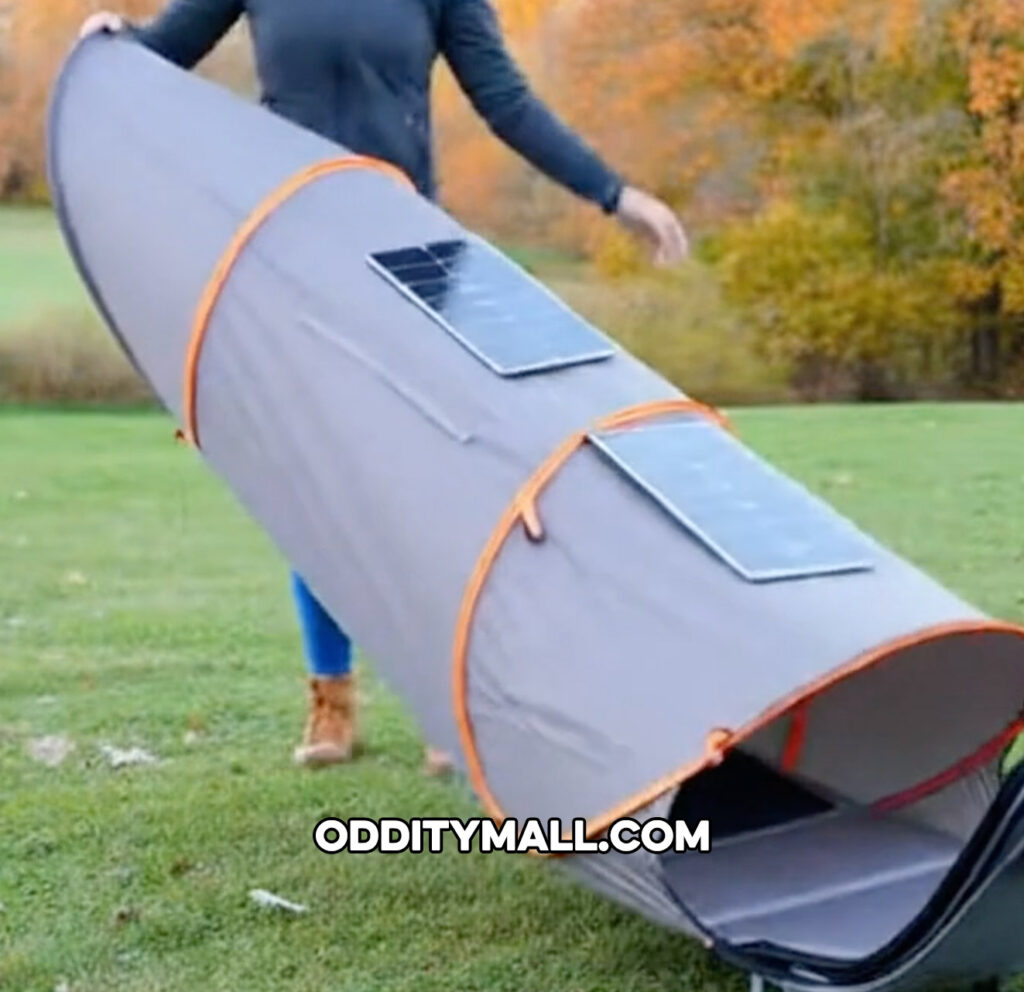
If you want the simplest bedtime routine with built in power and a true grab-and-go design, the backpack bed is hard to beat. If you want headroom and space to spread gear, a standard one person tent still wins. For ultralight missions in dry weather, a bivy is the champion. Many hikers keep both a backpack bed and a compact tent and choose based on the trip.
Who Benefits Most From a Backpack Bed
- Solo backpackers who value quick camp setup
- Digital nomads who want off grid charging on long days
- Festival campers who want a tidy footprint and fun lighting
- Emergency responders and community outreach teams who need reliable instant shelter
- Road trippers and bikepackers looking for a minimal, self contained overnight option

Real World Use Cases
- Sunset summit hikes where you sleep high and move early
- Desert routes where you want fewer loose parts in blowing sand
- Forest campgrounds when all you want is fast shelter and a book
- Urban overnights in a pinch when hotels are full
- Humanitarian work where quick, dry shelter can help keep teams rested
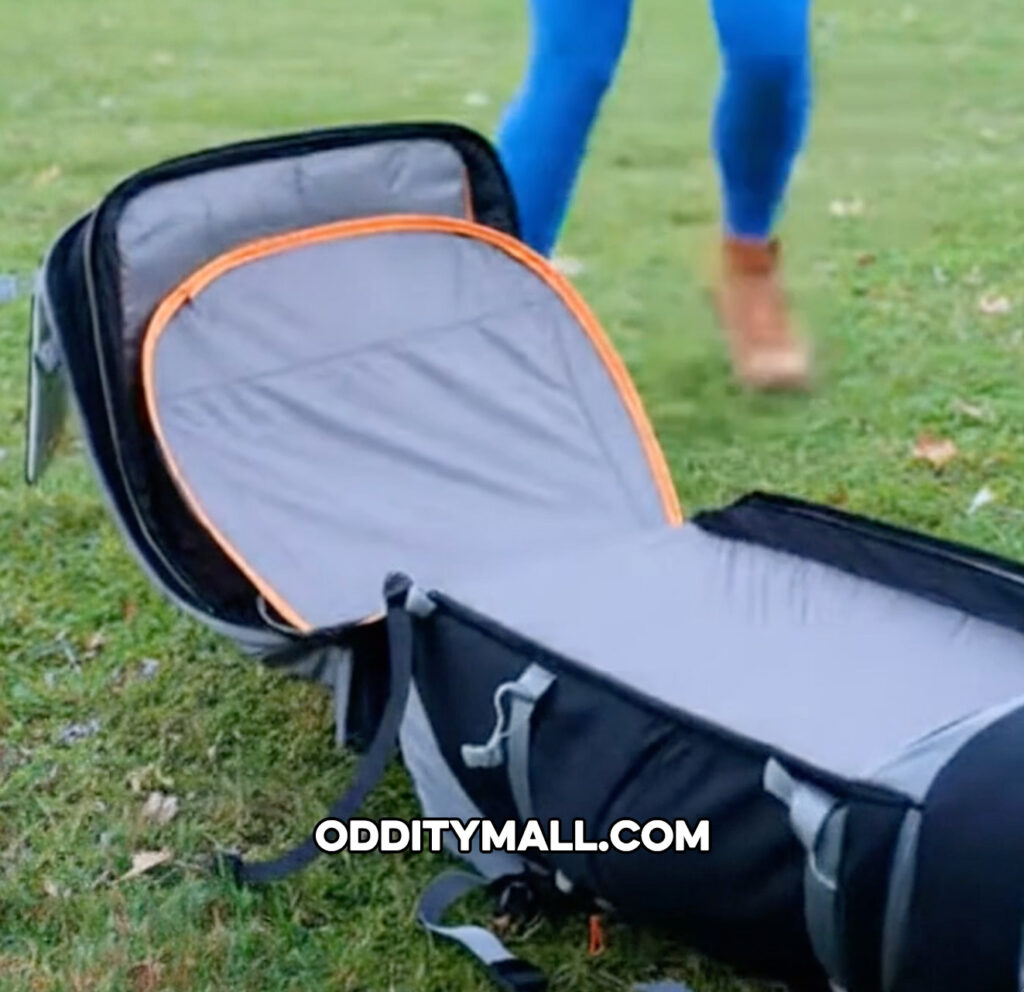
Pros and Cons
What You Will Love
- Setup is nearly effortless after a long day
- Solar panels keep your phone, headlamp, and camera topped up
- Integrated lighting turns the pod into a cozy reading nook
- The all in one format reduces forgotten parts and campsite clutter
What To Keep In Mind
- Interior space is snug compared to a tent
- The pack itself is purpose built, so you cannot swap it out
- Heavier than an ultralight bivy plus separate pack
- Ventilation must be managed in humid climates
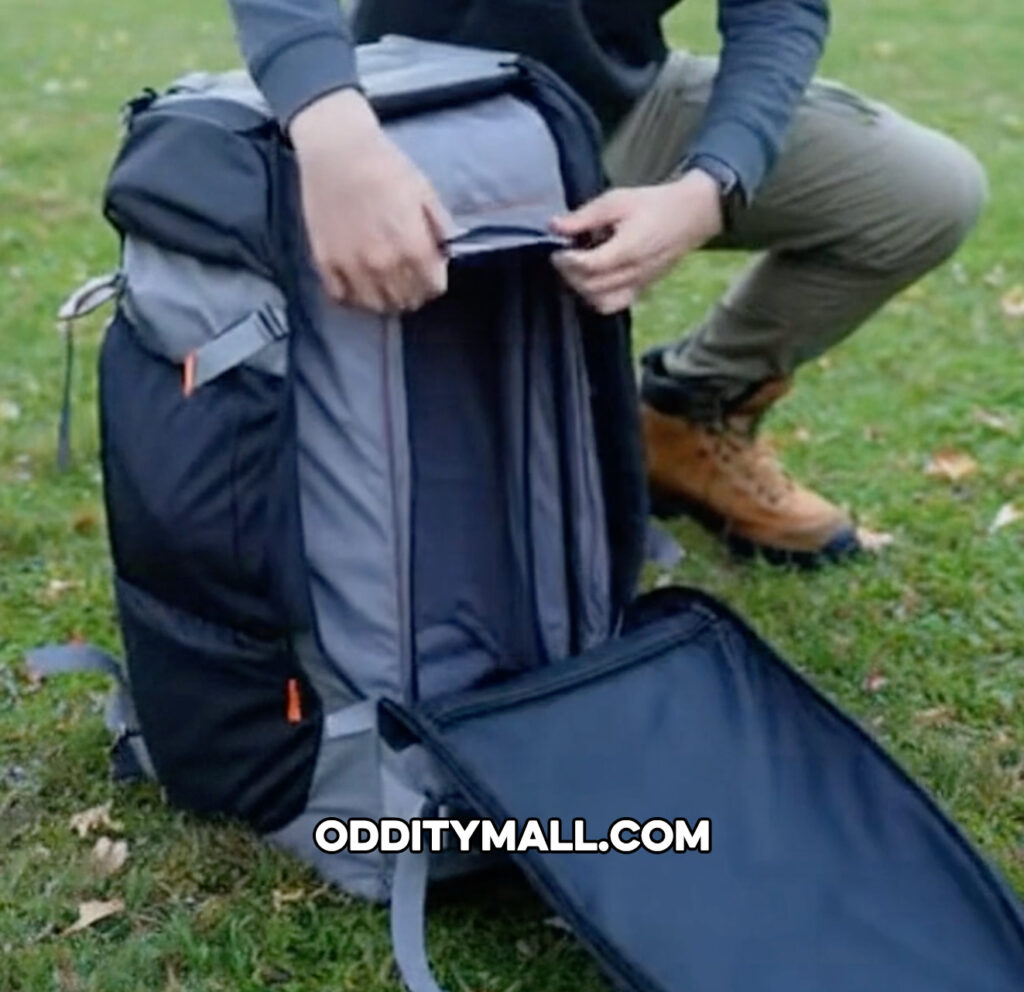
Sizing and Fit
Most backpack bed pods measure about 84 inches in length, 30 inches in width, and 30 to 32 inches in height when open. That fits most users up to 6 ft 4 in. If you are taller, look for long versions. When closed, the unit resembles a standard 70L backpack with room for layers, food, and water around the integrated shell.
How To Deploy a Backpack Bed Step by Step
- Set the pack on level ground with the canopy facing up.
- Unclip compression straps and unzip the deployment panel.
- Guide the arch ribs as they spring into shape.
- Pull the base flat and adjust the floor corners.
- Stake the two end tabs if wind picks up.
- Switch on interior LEDs and drop your sleeping bag inside.
- Charge devices using the USB hub as needed.
Reverse the sequence to pack up. Wipe moisture from the floor before rolling to prevent mildew.

Care and Maintenance Tips
- Let the pod dry fully in the morning sun before packing for the day.
- Clean with mild soap and water. Avoid harsh solvents.
- Check the wiring channels every few trips to make sure the cable grommets are seated.
- Recharge any internal battery using the solar panels or a power bank during transport.
- Store the pack loosely in a cool, dry place between adventures.
Smart Accessories That Pair Well
- A lightweight inflatable pillow for side sleeping
- A compact power bank to store solar energy for cloudy nights
- Titanium stakes for windy ridgelines
- A microfiber towel to dry condensation quickly
- A small clip fan for humid nights when airflow is key

Buyer Checklist: What Makes a Great Backpack Bed
- Verified waterproof ratings on the canopy and floor
- Sturdy composite ribs that pop open smoothly and fold cleanly
- Comfortable pack harness with real load transfer to the hips
- Quiet zippers with easy pull tabs for night use
- Thoughtful pockets for headlamp, phone, and glasses
- Solar power that delivers enough current to charge a modern phone
- Replacement parts availability from the brand
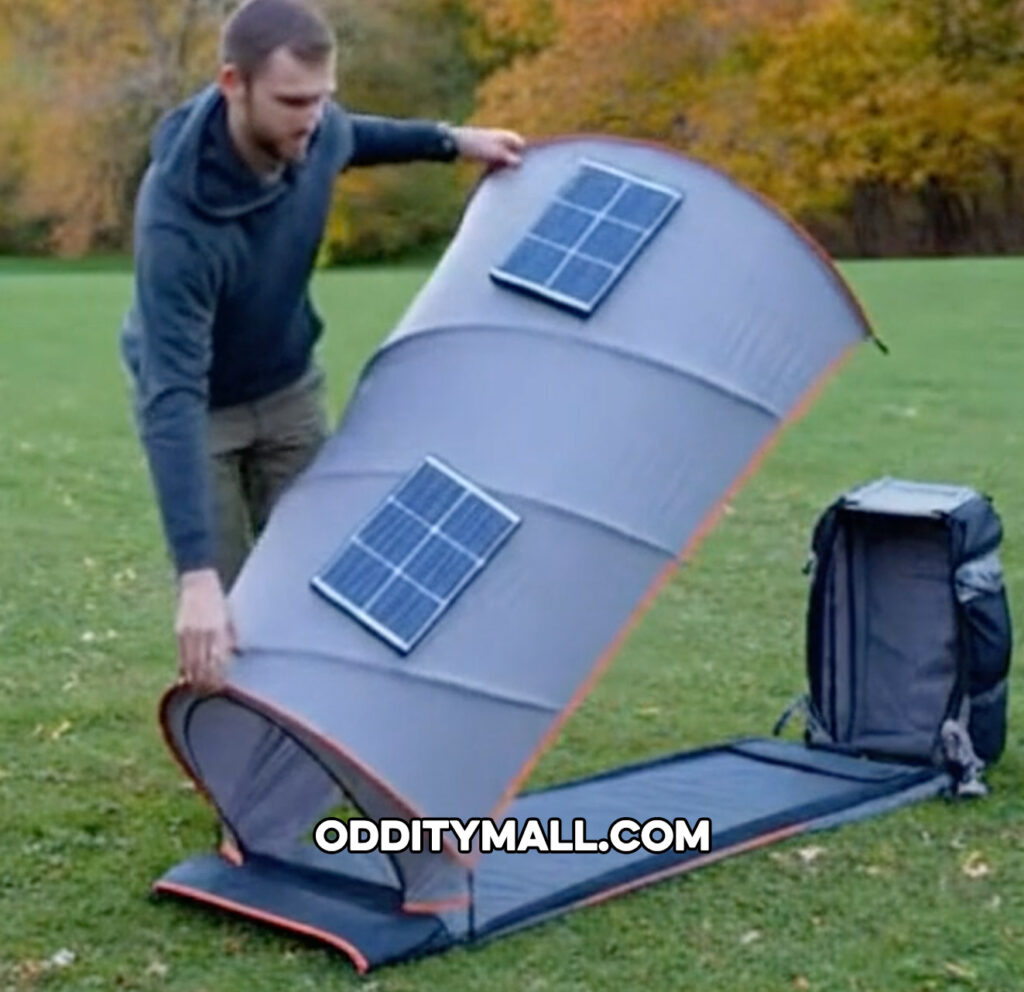
Frequently Asked Questions
Is a backpack bed warm enough for shoulder seasons
The insulated liner and built in mat add noticeable warmth, but your sleeping bag still does most of the work. Pair the backpack bed with a 3-season bag for spring and fall. For winter, add a compact foam pad under the integrated mat to boost R-value.
Can I remove the solar panels
On most models the panels sit in waterproof sleeves with quick disconnects. You can remove or replace them if needed, though many hikers keep them attached so they can harvest power while walking.
What about condensation
As with any small shelter, moisture can build overnight. Use the front and rear vents and crack a zippered door for cross breeze. Wiping the interior with a small towel before pack-up keeps the pod fresh.
How secure are the electronics in rain
The wiring runs through sealed channels and the control hub is sheltered inside. As long as doors are closed and zippers are seated, rain should not reach the components.
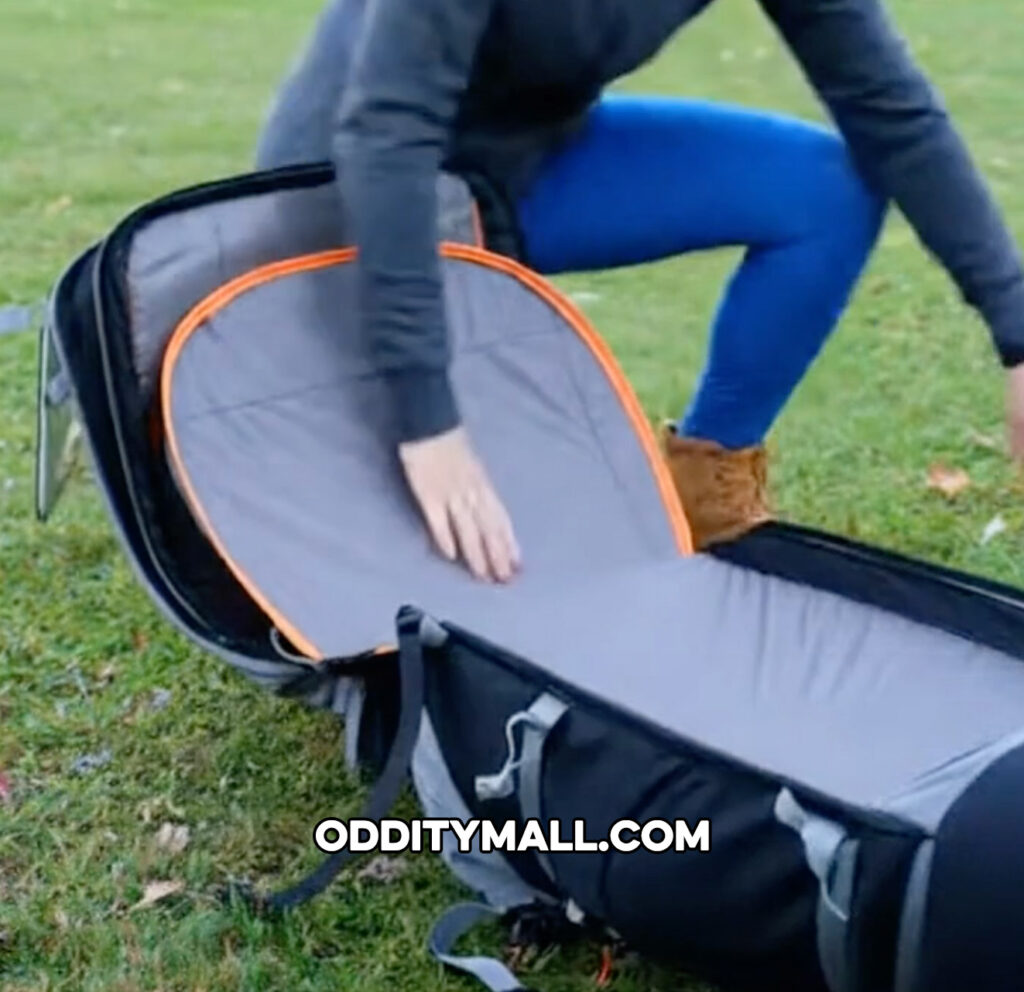
Why a Backpack Bed Belongs in Your Gear Closet
The backpack bed blends simplicity and capability in a way that makes spontaneous nights out easier. You carry one object that functions as pack, bed, and power source. You set up in seconds. You wake up with a charged phone for maps and photos. For many people that combination means more time outside, fewer excuses, and a smoother trail rhythm.
If your goal is to move quickly, rest anywhere, and travel light without giving up comfort, the backpack bed is a smart upgrade.

Quick Specs To Remember
- Capacity: about 60 to 70 liters
- Open size: about 84 x 30 x 32 inches
- Materials: ripstop nylon and PU coated polyester
- Power: two compact solar panels, dual USB ports, dimmable LEDs
- Ventilation: front and rear zippered openings with mesh
- Colors: charcoal with orange trim, olive with black, white with blue, desert tan with red, plus reflective and camo options

The Bottom Line
A backpack bed turns the end of a long hike into the easiest part of your day. It is fast, compact, and surprisingly cozy. With weather protection, integrated lighting, and optional solar charging, this clever shelter invites more adventure with fewer moving parts. Pack it, pop it, and enjoy the view from your tiny private lodge under the stars.


